The 4th of July, 2025 – Independence Day
Today, July 4th, is Independence Day here in the United States. It is a federal holiday commemorating the adoption of the Declaration of Independence on July 4, 1776, which was the date the United States formally declared its independence from Great Britain in order to achieve freedom from British rule.
the United States. It is a federal holiday commemorating the adoption of the Declaration of Independence on July 4, 1776, which was the date the United States formally declared its independence from Great Britain in order to achieve freedom from British rule.
I wish everyone a safe and enjoyable Independence Day! We all know what goes on to celebrate the 4th of July, beers, BBQ’s and fireworks, so I really mean it when I say BE SAFE OUT THERE and don’t blow off any of your appendages!
And may we all remember those who are away from family this weekend, standing a post, whether in the Military or as a First Responder protecting and watching over us!
The following are the stories to close out this week...
Of note, from "The Secret List", the LODD Funeral details for Coeur d’Alene Fire Department Battalion Chief John Morrison Jr. and Kootenai County Fire Rescue Battalion Chief Frank Harwood.
Everyone have a safe weekend!
Tom
Pilot suffers life-threatening injuries in aircraft crash north of Hart Park
by BakersfieldNow Staff
BAKERSFIELD, Calif. (KBAK/KBFX) — A pilot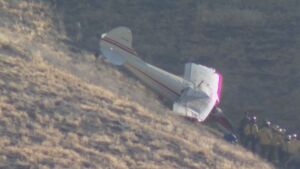 suffered life-threatening injuries after an aircraft crashed in an isolated area north of Hart Park early Thursday morning.
suffered life-threatening injuries after an aircraft crashed in an isolated area north of Hart Park early Thursday morning.
The Federal Aviation Administration said a Cessna 170A crashed about 19 miles east of Bakersfield, California, at around 6:40 a.m. on Thursday, July 3.
The Kern County Fire Department said firefighters, the Kern County Sheriff’s Office, Hall Ambulance, and the California Highway Patrol were called Thursday morning to an area of Round Mountain Road and Pyramid Road, an area north of Hart Park, to a report of a crashed airplane.
When crews arrived, they found the plane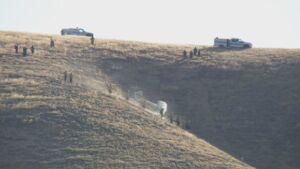 had crashed in an isolated, hard-to-access area.
had crashed in an isolated, hard-to-access area.
The fire department said the crash happened where no homes were nearby.
Firefighters were able to get to the airplane.
The pilot of that aircraft, and sole occupant, was able to get out of the aircraft. The pilot was placed in a basket for crews to carry him up to an air ambulance that was waiting nearby. The pilot was taken to a hospital.
The pilot suffered life-threatening injuries.
The FAA will be investigating the incident.
Cessna Aircraft Crash Lands On Kona Beach Road
by Big Island Video News
(BIVN) – An airplane crash landed in North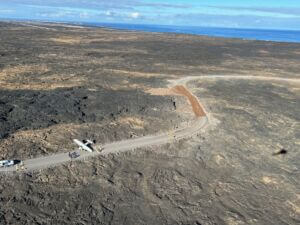 Kona on Thursday, and the pilot was able to walk away from the plane with only minor injuries.
Kona on Thursday, and the pilot was able to walk away from the plane with only minor injuries.
The Hawaiʻi Fire Department says the Cessna aircraft crash landed on Kekaha Kai State Park access before 7 a.m. HST.
“A mayday call came into to the tower, and shortly after that all communications were lost with the aircraft due to it losing power,” the fire department reported.
The pilot was the only person on board the plane.
After the crash landing, the pilot was “able to walk away from the aircraft,” fire officials say. First responders treated and assessed the pilot’s injuries, and later transported the pilot to Kona Hospital.
The Kekaha Kai State Park road was expected to remain closed “for most if not all of the day until the aircraft can be removed”, the fire department reported.
https://www.bigislandvideonews.com/2025/07/03/cessna-aircraft-crash-lands-on-kona-beach-access-road/
LODD FUNERAL DETAILS-IDAHO FALLEN FIRE CHIEFS (The Secret List)
All,
Details as follows:
John Morrison, Jr.
Battalion Chief
Coeur d’Alene Fire Department
Local 710
Date of Death: June 29, 2025
Celebration of Life Date: July 10, 2025
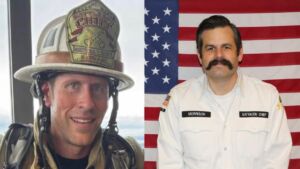
Frank Harwood
Battalion Chief
Kootenai County Fire Rescue
Local 2856
Date of Death: June 29, 2025
Celebration of Life Date: July 11, 2025
Battalion Chief Morrison, 53, and Battalion Chief Harwood, 42, were killed in the line of duty on June 29 in an ambush attack while responding to a brushfire at Canfield Mountain in Idaho. Their loss is deeply felt across the fire service and among all who knew and served alongside them.
IMPORTANT NOTE:
A Celebration of Life to honor Chief Morrison will be held on Thursday, July 10.
A Celebration of Life to honor Chief Harwood will be held on Friday July 11.
Both services will take place at the Hagadone Event Center, 900 South Floating Green Drive, Coeur d’Alene, Idaho, 83814.
Expressions of sympathy and condolences for the families and the Locals can be sent to:
5271 E Seltice Way, Post Falls, Idaho 83854 (Battalion Chief Harwood)
300 E. Foster Ave, Coeur d’Alene, Idaho 83814 (Battalion Chief Morrison).
Those wishing to contribute to the memorial funds for both Chief Morrison and Chief Harwood can do so by visiting IAFF.org/Idaho-Lodd
Take Care. Be Careful. Pass It On.
BillyG
The Secret List 7-3-2025-2016 Hours

NTSB Final Report: Capella Aircraft Corp FW1C50
Pilot Reported That He Was Unfamiliar With The Single Seat Amateur-Built Airplane And His Intent Was To Perform High-Speed Taxi Testing
Location: Ozark, Missouri Accident Number: CEN25LA062
Date & Time: December 15, 2024, 11:20 Local Registration: N556CF
Aircraft: Capella Aircraft Corp FW1C50 Aircraft Damage: Substantial
Defining Event: Miscellaneous/other Injuries: 1 Minor
Flight Conducted Under: Part 91: General aviation - Personal
Analysis: The pilot reported that he was unfamiliar with the single seat amateur-built airplane and his intent was to perform high-speed taxi testing of the airplane. He stated that he made a highspeed taxi to the south on runway 18 and then proceeded to make another high-speed taxi in the opposite direction on runway 36. During the high-speed taxi on runway 36, wind from the southeast picked up the left wing, the airplane inadvertently became airborne, and the airplane drifted to the right. The airplane was heading toward trees and the pilot applied full throttle to clear the trees but was unable to maintain control of the airplane. The airplane struck the ground, and the nose and right main landing gear separated. The right wing incurred substantial damage. The pilot reported that there were no mechanical malfunctions or failures of the airplane that would have precluded normal operations.
Probable Cause and Findings: The National Transportation Safety Board determines the probable cause(s) of this accident to be -- The pilot’s failure to maintain aircraft control during high-speed taxi.
FMI: www.ntsb.gov
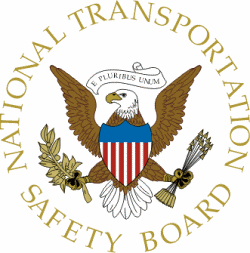
Today in History
24 Years ago today: On 4 July 2001 Vladivostokavia flight 352, a Tupolev Tu-154, crashed near Burdakovka, Russia following a loss of control while on approach to Irkutsk Airport, Russia, killing all 145 occupants
| Date: | Wednesday 4 July 2001 |
| Time: | 02:08 |
| Type: | Tupolev Tu-154M |
| Owner/operator: | Vladivostokavia |
| Registration: | RA-85845 |
| MSN: | 86A735 |
| Year of manufacture: | 1986 |
| Total airframe hrs: | 20953 hours |
| Cycles: | 11387 flights |
| Engine model: | Soloviev D-30KU-154-II |
| Fatalities: | Fatalities: 145 / Occupants: 145 |
| Other fatalities: | 0 |
| Aircraft damage: | Destroyed, written off |
| Category: | Accident |
| Location: | near Burdakovka - Russia |
| Phase: | Approach |
| Nature: | Passenger - Scheduled |
| Departure airport: | Ekaterinburg-Koltsovo Airport (SVX/USSS) |
| Destination airport: | Irkutsk Airport (IKT/UIII) |
| Confidence Rating: | Accident investigation report completed and information captured |
Narrative:
Vladivostokavia flight 352, a Tupolev Tu-154, crashed near Burdakovka, Russia following a loss of control while on approach to Irkutsk Airport, Russia, killing all 145 occupants
Vladivostokavia Flight 352 operated on a flight from Ekaterinburg to Vladivostok with an intermediate stop at Irkutsk. The flight departed Ekaterinburg at 19:47 local time and climbed to the cruising altitude of 10,100 m. Some three hours after takeoff, at 01:50 local time, descent was initiated. The descent and approach into Irkutsk was flown by the first officer.
At 02:05 the crew reported at 2100 m, runway in sight. The airplane still had an airspeed of 540 km/h. The maximum speed at which the landing gear may be lowered was 400 km/h. At 02:06:56 the airplane level off at 900 m, the airspeed still being about 420 km/h. The first officer ordered the gear down and the speed further decreased to 395 km/h with engines at idle. When the gear was down and locked the airplane entered a left hand turn with a 20-23 degree bank. The airspeed further decreased to 365 km/h where the recommended speed was 370 km/h in this stage of the flight. Power was added slowly. This was only just sufficient for maintaining an altitude of 850 m at 355-360 km/h. At 02:07:46, while still in the left hand turn, the angle of attack increased to 16,5° because the autopilot attempted to maintain altitude with a decreasing speed. An aural warning then sounded, indicating a high angle of attack. The first officer attempted to correct this and by using the control column, he disconnected the autopilot. Because he deflected the control column to the left, the left bank increased trough the maximum permissible value of -30° to -44°, and then to -48°. With the nose pitched down the speed increased to 400 m.
The airplane entered a layer of clouds, so the crew did not have a possibility of observing of the natural horizon and the landmarks under these conditions at night.
The captain intervened and attempted to control the airplane. He alternately deflecting the steering wheel to the left and right. An intensive deflection of steering control to the right, caused a positive angular acceleration of +4,4°/sec2. The captain reacted by deflecting the steering wheel to the left again. The first officer now realizes that the airplane is in a severe left bank (-45°) and indicates that they should be rolling to the right.
Because of an increase in vertical descent rate (20 m/sec), one of the crew members pulled the control column. The airplane pitched up rapidly, entered a stall and a subsequent flat spin. The crew were unable to regain control. After spinning for 22 seconds, the aircraft slammed down on its belly, broke up and burned.
The cause of the accident were the erroneous actions of the crew:
When approaching the landing, the crew could not maintain the altitude mode of 850 meters when the aircraft was in the left turn at a speed less than recommended, which caused the autopilot to deflect the elevator to the height to fly, which increased the angle of attack.
With a 45° left bank the second pilot pulled the steering wheel toward him. As a result, the angle of attack increased. At a large angle of attack, much more thrust is required than the one used by the crew. As a result, the aircraft reached the overcritical angles of attack and began to lose the lift of the wing.
The abnormal situation continued to develop, after 10 seconds of delay with increasing engine thrust, controllability was lost. Incorrect actions of the commander of the crew (instinctive, contrary to instructions) only aggravated the situation and as a result the plane crashed.
